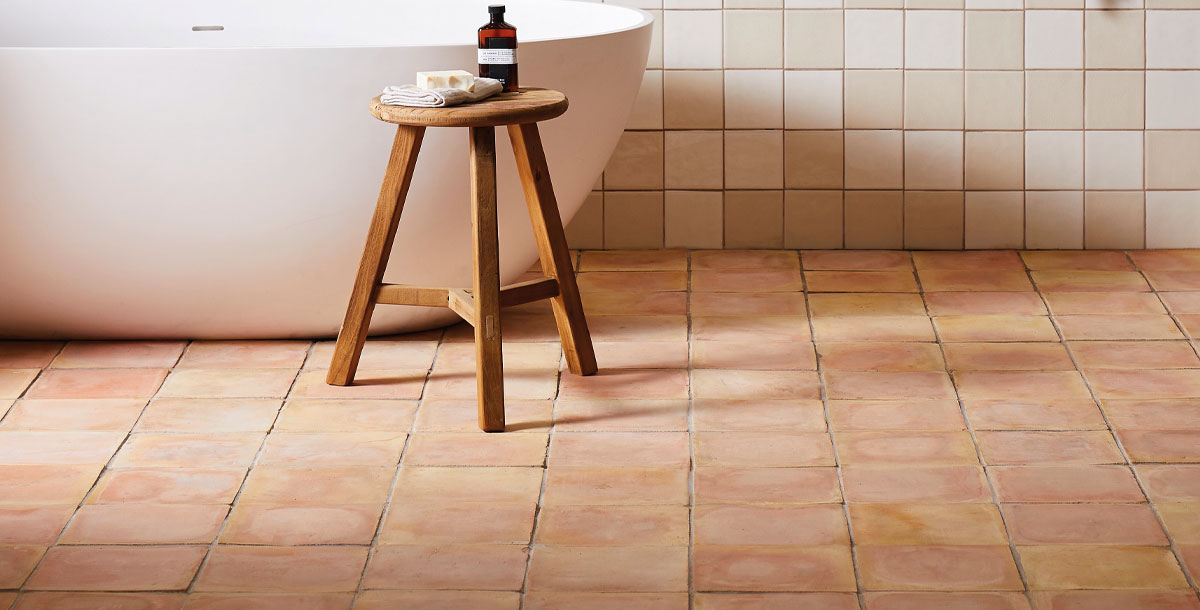In the modern era of going green, it is increasingly essential to consider environmentally friendly choices when renovating homes. A major method to reduce environmental impact is by selecting reclaimed tiles. These are tiles that have been salvaged from demolished buildings and reused for other purposes; consequently, they offer immense advantages making them a wise and ethical option. This article discusses the ecological effects of getting reclaimed tiles about their role in promoting sustainability, decreasing waste as well as conserving resources.
Reducing Waste and Landfill Usage
Globally, waste emanating from construction and demolition activities is among the largest. For instance, annually there are millions of tons of construction materials including tiles that end up in landfills. You can help reduce this waste through the use of reclaimed tiles. Instead, these salvageable materials come out during the renovation or demolition process which saves them from being thrown away as rubbish. This practice not only decreases heaps at landfills but also lessens the demand for new sites for landfills with significant consequences on ecosystems.
Conserving Natural Resources
Making new tiles requires obtaining raw materials such as clay, sand, and minerals directly from natural sources. This harvesting procedure can lead to loss of habitats, soil erosion together with water pollution. However, by using reclaimed ones you save on new raw materials hence conserving these valuable commodities. In some regions where natural resource extraction has exceeded limits resulting in tremendous environmental impacts due to over-mining or depletion already; so it becomes important to maintain any occurring balance.
Lowering Carbon Footprint
The production of new tiles involves mining, transportation, and firing through high-temperature kilns all of which consume large amounts of energy. As a result, there is a huge emission of carbon dioxide connected with human-induced climate changes. Conversely, re-utilized ones had gone through all these stages before. Now you don’t need to manufacture afresh when you recycle old ones thereby reducing your footprint. Moreover, the transportation of recovered tiles is usually done locally, thus reducing carbon emissions related to long-distance shipping.

Supporting the Circular Economy
The main aim of a circular economy is to reduce life cycle costs and minimize waste by reusing recycling, and repurposing materials. In this way, reclaimed ones enable the longest possible use of construction materials. For instance, products in a circular economy are designed with durability as well as for reuse and recycling purposes. In this context, they give an ideal example since they are given another opportunity to be used in different ways other than their initial purpose decreasing pressure for brand new items and reducing demand on them.
Preserving Historical and Cultural Heritage
Most of these recovered types come from historical buildings or sites representing history and culture. When you select such tiles it means that you want to preserve such stories within your modern spaces at home. Thus it enhances uniqueness in your house while preventing loss of artistry and craftsmanship over time; further, it gives room for history not to be forgotten over time through preservation. This way, the reuse of old tiles helps keep cultural heritage intact while ensuring environmental friendliness
A Decrease in Chemicals
New tiles are often manufactured with different chemicals and glazes that can cause adverse effects on the environment. These substances may, through leaching, find their way into soils and water bodies, thus polluting and causing health risks to local communities. On the other hand, reclaimed tiles are existing materials that do not require any new chemical treatment. The use of reclaimed tiles helps reduce demand for these toxic materials hence cleaning up our environment.
Promotion of Sustainable Design
Incorporating reclaimed tiles into your home creates a larger sustainable design and building culture. When homeowners and designers choose to go for re-claimed items they send a message to manufacturers and retailers about the importance of sustainability. This demand can drive innovation in the industry leading to more environmentally friendly products and methods of production. Therefore by applying sustainable designs like using reclaimed tiles, we create a market that values ecological responsibility as opposed to anything else.

Economic Advantages and Local Backing
The use of recycled tiles can also provide economic benefits indirectly supportive of environmental sustainability. Reclaimed tile is usually sourced from local salvage yards, architectural salvage companies, or specialized dealers. Purchasing locally sourced reclaimed tiles supports small businesses as well as the local economy thus eliminating transporting materials over long distances causing pollution in the process. In this way, local support engenders more community-based approaches to sustainability where resources are pooled together within an area.
Conclusion
The environmental consequences involved in selecting reclaimed tiles are deep-seated and varied at once. Using them allows you to reduce waste, preserve natural resources, minimize carbon footprints, promoting circular economies among others as compared to virgin raw materials that lead towards sustainable development goals. They help preserve historical cultural heritage while ensuring harmful chemical usage is minimized thereby enhancing sustainable design practices. Finally supporting local businesses via the purchase of recovered slates leads to a much more self-sustained economy too. Since property owners and developers increasingly focus on environmental care when they build or renovate their homes, the use of reclaimed tiles can be seen as a smart and sustainable choice for any home improvement project. Through the integration of reused tiles in your next remodeling job, you enhance your house’s beauty while positively influencing the environment.
